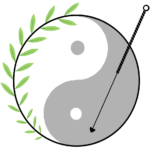Evidence of an analgesic response to acupuncture in healthy adults
 Researchers at the University of Munich, in Germany, studied the immediate effects of different types of acupuncture on thermal, mechanical, and vibratory sensory thresholds.
Researchers at the University of Munich, in Germany, studied the immediate effects of different types of acupuncture on thermal, mechanical, and vibratory sensory thresholds.
First, the details.
- 24 healthy adults received each of 3 different forms of acupuncture.
- Manual acupuncture
- Acupuncture with low-frequency electrical stimulation
- Acupuncture with high-frequency electrical stimulation
- The time between treatments was 1 week.
- Acupuncture was applied in 1 leg at standard acupuncture points: spleen 6, spleen 9, stomach 36, and gallbladder 39 — points commonly used in pain management.
- The effects of acupuncture were evaluated by systematic quantitative sensory testing immediately after each treatment on both lower extremities, including thermal and mechanical perception and pain and vibratory thresholds.
- The researchers were not aware of the treatment given — single-blind.
And, the results.
- With manual acupuncture, the heat pain threshold increased on the treated and untreated leg compared to before treatment.
- Low- and high-frequency electrostimulation led to a higher mechanical pain threshold on the treated side compared to before treatment and manual acupuncture.
- All forms of acupuncture increased the pressure pain threshold 25% to 52% on both sides compared to before treatment.
The bottom line?
The results point to 2 nerve fibers — “A delta” pain fibers and the “C” pain fibers — being specifically affected by acupuncture. Although the effects were modest, the researchers believe they provide the basis for future studies in people with chronic pain, where the effects might be more dramatic.
The study is important because it documents a positive, objective response to acupuncture in healthy adults, and supports the theory and rationale for using acupuncture to achieve pain relief.
5/2/10 19:22 JR